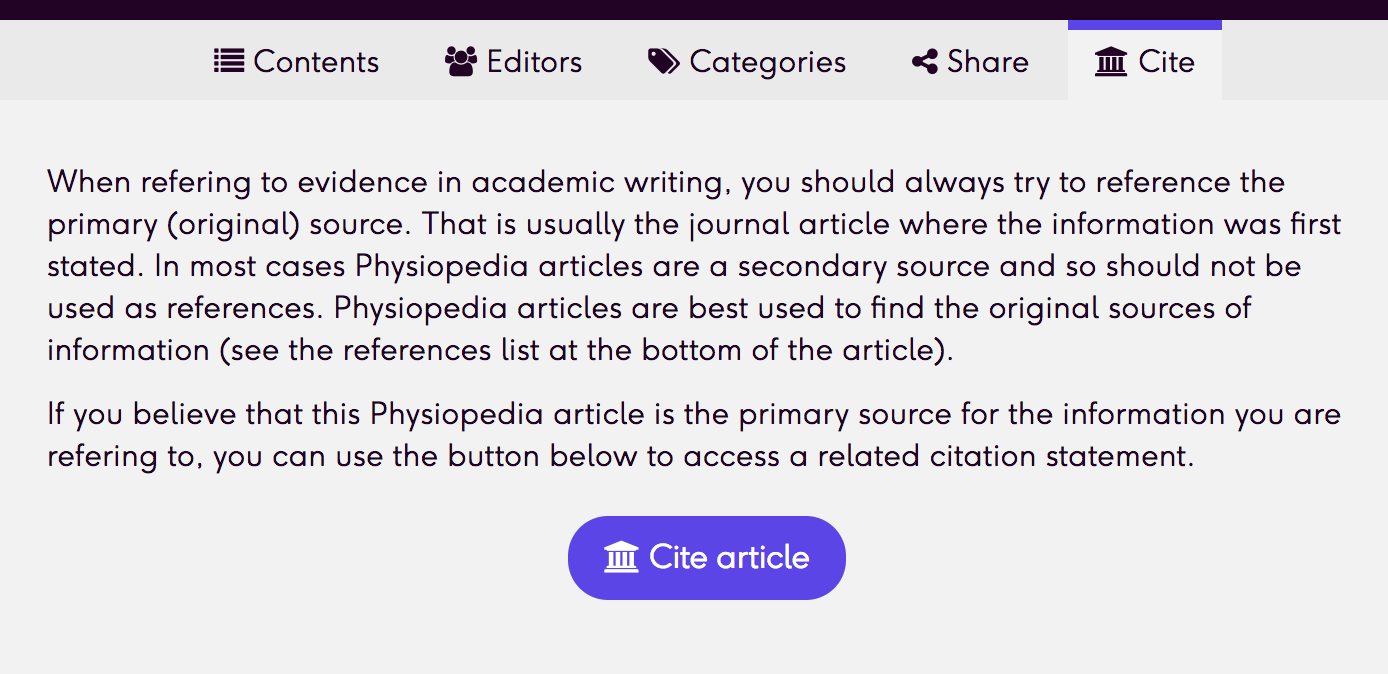
New ‘Cite’ tool has been added to Physiopedia!
By using principles of good academic practice you can ensure anyone who reads your work can identify your own thoughts and can distinguish those of others. An important aspect of academic practice is plagiarism which is a form of academic theft.
Referencing is a system used in the academic community to indicate where ideas, theories, quotes, facts and information used to undertake a piece of writing, can be found. There are two parts of referencing the citations within the body of text and a list of these citations at the end of your work. The citation is the acknowledgement of someone else’s work within your own.
Physiopedia is brilliant educational resource for the global physiotherapy community. Each Physiopedia article contains lots of information from a variety of primary sources, meaning the original and firsthand evidence. This makes the majority of Physiopedia a secondary source. This means if you want to cite (use these pages as a reference) you should use the primary source used within the text which can be found in the reference list at the bottom of each page.
However there are times when you may feel it is appropriate to use Physiopedia as a primary reference. If this is the case, we have now added a new citation tool to each page to help you with this process (as shown below).
If you would like to learn more about referencing on Physiopedia, and in particular the Vancouver style we use, the make sure you read the page entitled ‘Referencing‘.
In a nutshell:
- Physiopedia pages are usually secondary sources and you should seek the original source.
- Physiopedia pages are a great way to find the primary source for a concept or idea.
- There are lots of different ways you can reference a source. Make sure you use the correct ‘style‘ for your work!
No comments:
Post a Comment